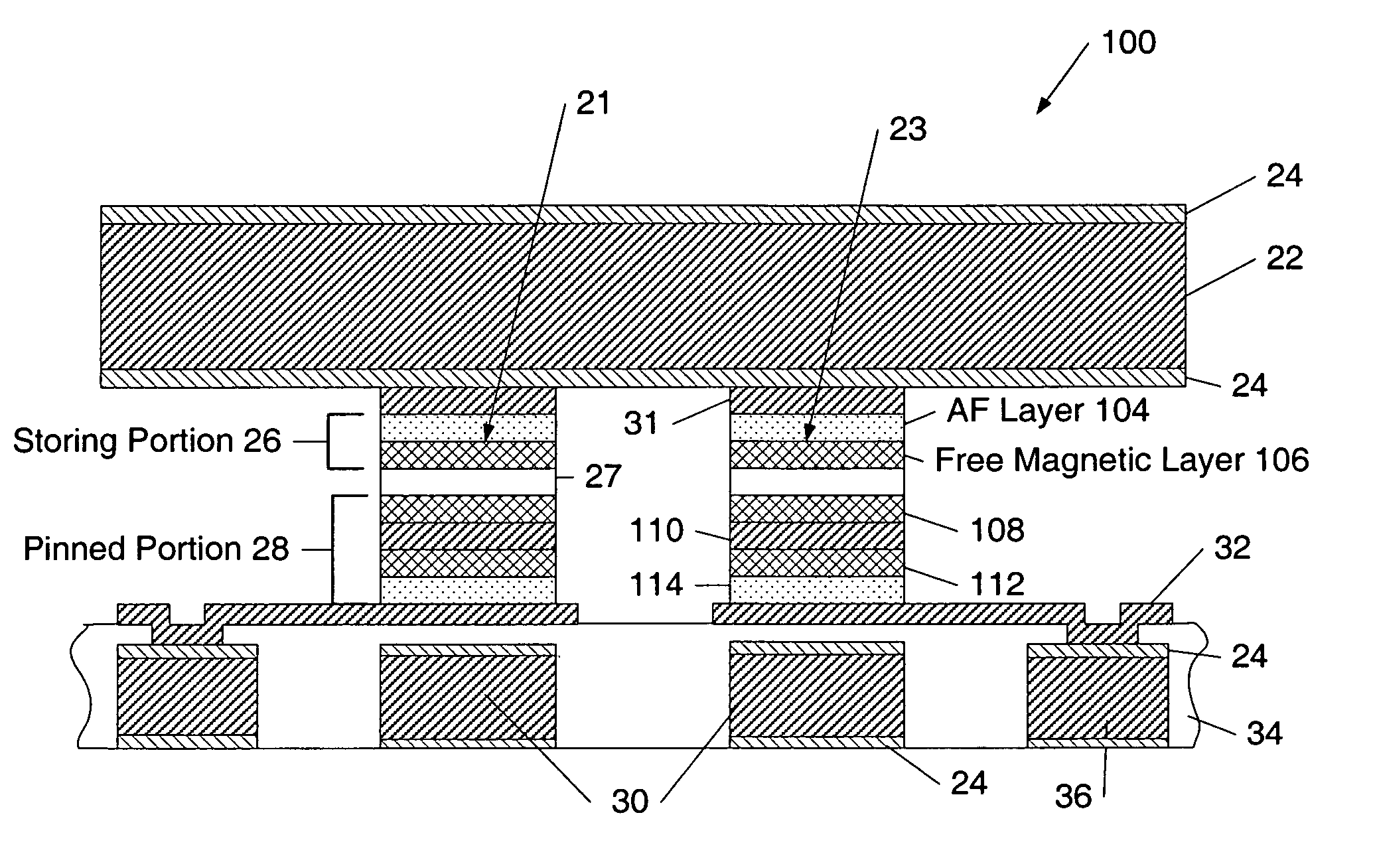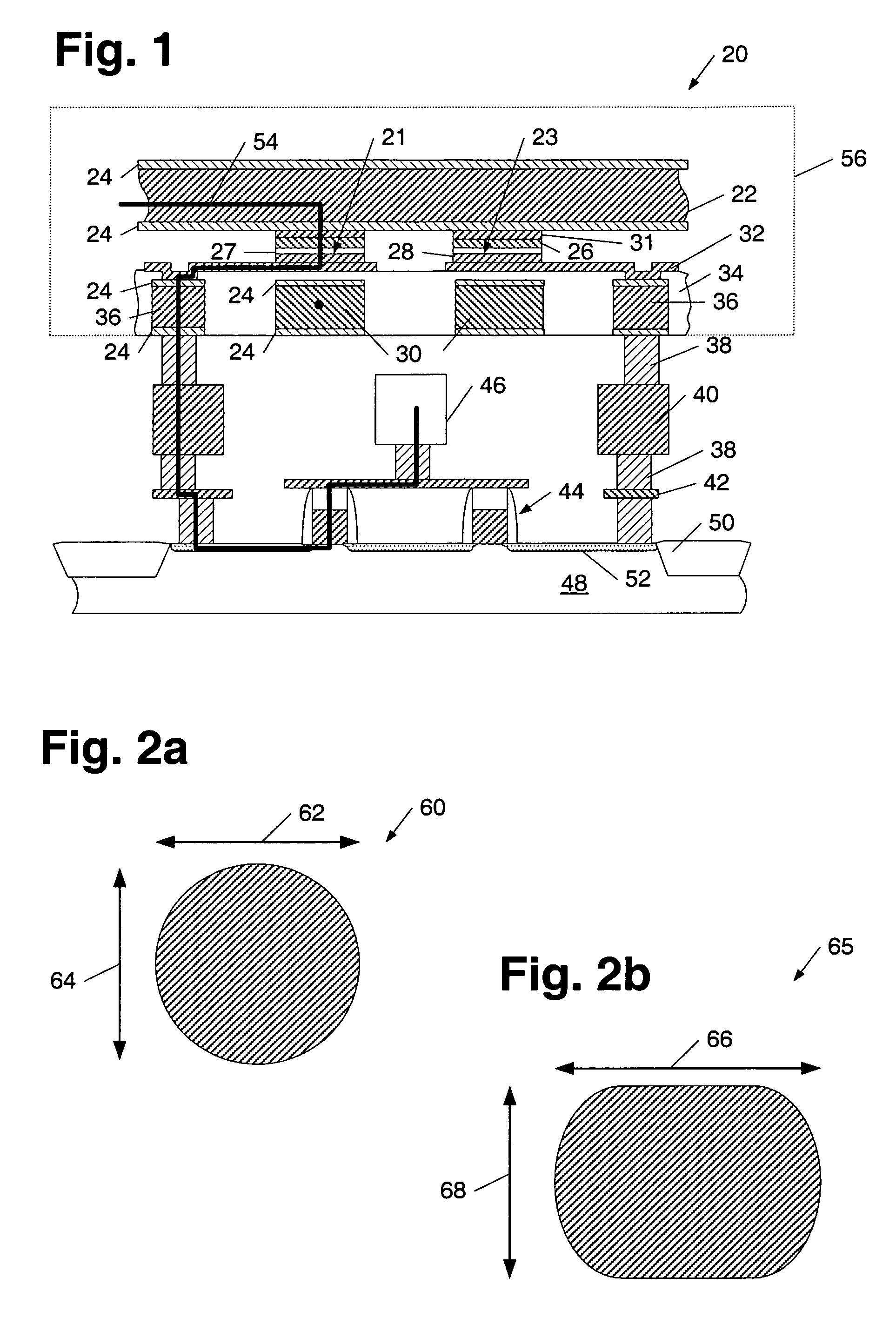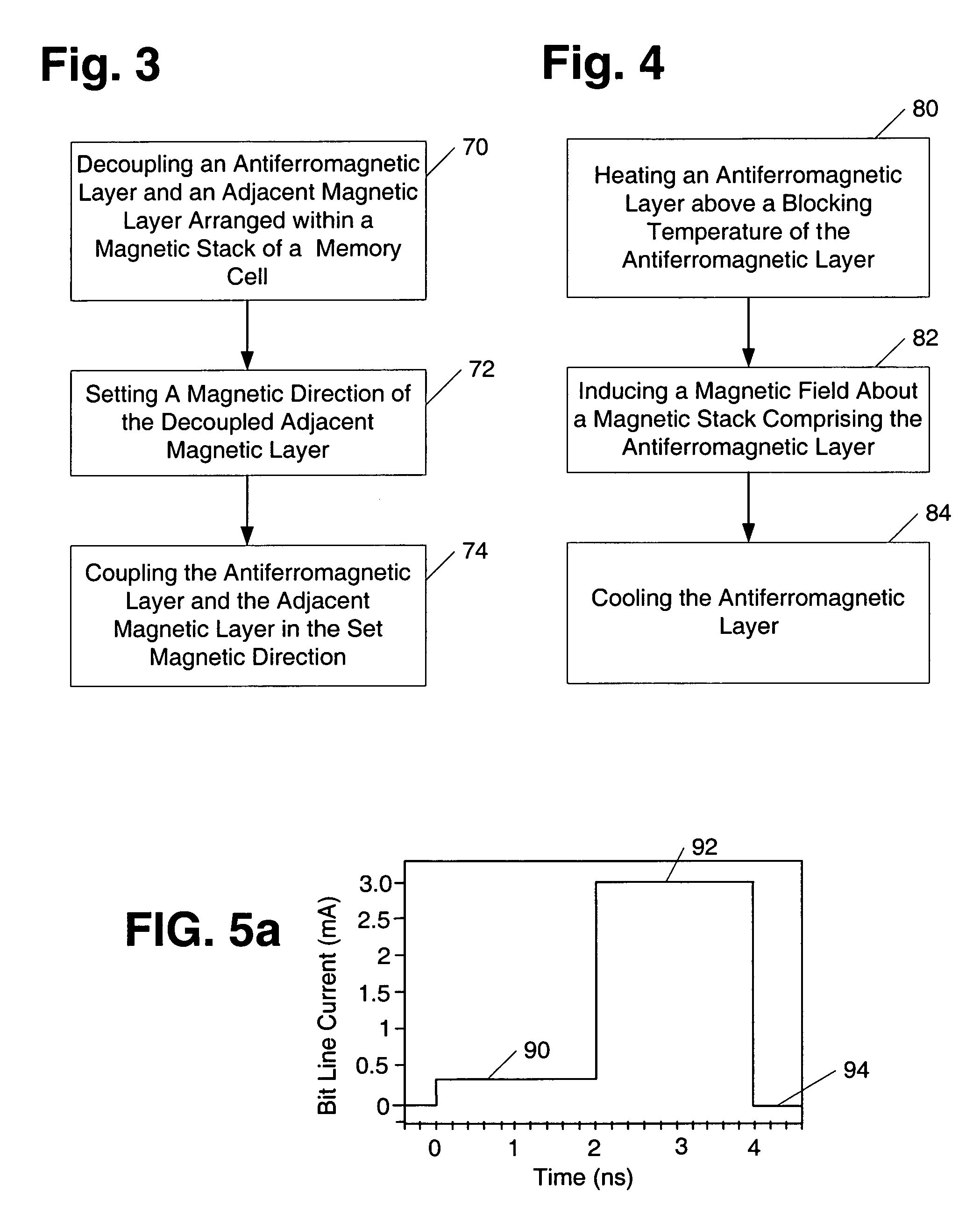High density MRAM using thermal writing
- Summary
- Abstract
- Description
- Claims
- Application Information
AI Technical Summary
Benefits of technology
Problems solved by technology
Method used
Image
Examples
Embodiment Construction
[0034]Turning to the drawings, exemplary embodiments of memory cell array configurations are provided in FIGS. 1 and 6–9. In addition, methods for programming a memory cell having such configurations are described in reference to FIGS. 3–5. FIG. 1 depicts a partial cross-sectional view of memory array 20 which includes magnetic memory cell junctions 21 and 23 interposed between bit line 22 and digit lines 30. In this manner, memory array 20 may be part of a magnetic random access memory (MRAM) device. Magnetic memory cell junctions 21 and 23 may include storing portion 26, tunneling layer 27, and pinned portion 28, which are described in more detail below. Such memory cell junctions may alternatively be referred to as memory cells, MTJ cells, magnetic stacks, or dots and therefore, may be used interchangeably herein. Although FIG. 1 illustrates only two memory cell junctions underlying bit line 22, memory array 20 may include more than two memory cell junctions underlying bit line 2...
PUM
 Login to View More
Login to View More Abstract
Description
Claims
Application Information
 Login to View More
Login to View More - R&D
- Intellectual Property
- Life Sciences
- Materials
- Tech Scout
- Unparalleled Data Quality
- Higher Quality Content
- 60% Fewer Hallucinations
Browse by: Latest US Patents, China's latest patents, Technical Efficacy Thesaurus, Application Domain, Technology Topic, Popular Technical Reports.
© 2025 PatSnap. All rights reserved.Legal|Privacy policy|Modern Slavery Act Transparency Statement|Sitemap|About US| Contact US: help@patsnap.com



